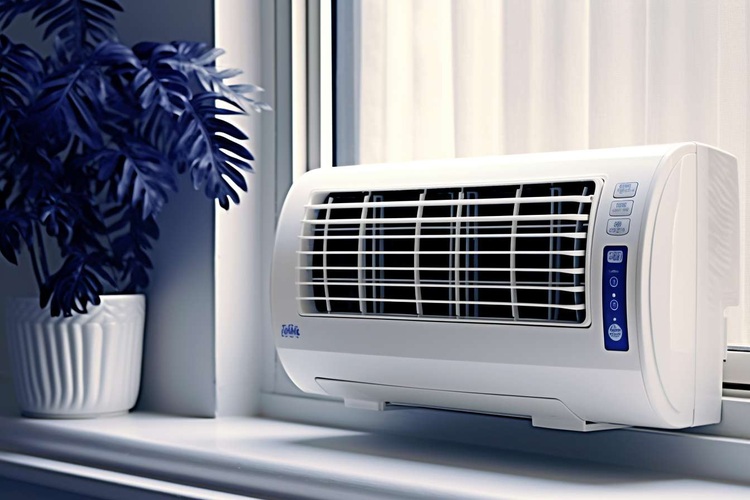Small Portable Aircon Units: Key Features and Benefits
Portable air conditioners have revolutionized how we think about cooling our homes and workspaces. These compact cooling solutions offer flexibility and convenience without the permanence or installation hassles of traditional systems. Small portable aircon units provide efficient temperature control in spaces where window units or central systems aren't feasible, making them increasingly popular among renters, homeowners with specific cooling needs, and those seeking supplemental cooling options.

What Makes Portable Air Conditioners Different?
Portable air conditioners stand apart from other cooling systems primarily through their mobility. Unlike window units or split systems that remain fixed in place, these compact cooling devices can be moved from room to room as needed. They typically feature built-in wheels for easy transport and require only a nearby electrical outlet and window access for the exhaust hose. This versatility makes portable air conditioners ideal for cooling specific zones in your home rather than wasting energy cooling unused spaces. Most models operate as standalone units that collect condensation in internal tanks or through self-evaporative technology, eliminating the need for permanent drainage solutions in many cases.
Key Features of Small Aircon Units
Today’s small portable aircon units come packed with sophisticated features that enhance their performance and user experience. Many models offer programmable timers allowing you to schedule operation hours, saving energy and ensuring you return to a comfortably cool space. Digital displays and remote controls provide convenient temperature management without getting up from your seat. Advanced units include sleep modes that gradually adjust the temperature throughout the night for optimal comfort while conserving energy. Multi-functional capability is another standout feature, with many portable air conditioners doubling as dehumidifiers and fans, providing year-round utility. Some premium models even incorporate air purification technology with HEPA filters to improve indoor air quality while cooling.
Energy Efficiency Considerations
Energy efficiency remains a top concern for consumers shopping for portable air conditioners. The good news is that many small aircon units now boast impressive energy ratings that help minimize operational costs. Look for models with Energy Star certification or high Energy Efficiency Ratio (EER) numbers to ensure optimal performance with minimal power consumption. Programmable thermostats allow precise temperature control, preventing energy waste from overcooling. Many newer units feature eco modes that automatically adjust cooling output based on ambient room temperature, further reducing energy use. Some portable air conditioners also include sleep timers that gradually reduce cooling as you fall asleep, providing comfort while conserving electricity throughout the night.
Installation and Maintenance of Portable Air Conditioners
One of the greatest benefits of portable aircon units is their straightforward setup process. Most models come with window kits that adapt to standard window sizes and can be installed in minutes without specialized tools. The typical installation involves connecting the exhaust hose to the unit, securing the window bracket, and plugging into a standard outlet. Maintenance requirements are similarly straightforward, consisting primarily of regular filter cleaning (usually every two weeks during heavy use), emptying the condensate tank if your model doesn’t use self-evaporative technology, and occasional wipe-downs of the exterior. This simplicity makes portable air conditioners particularly attractive to renters and those who want cooling solutions without permanent modifications to their living spaces.
Benefits of Portable Aircon for Different Living Situations
The versatility of portable air conditioners makes them suitable for various living arrangements. For apartment dwellers with strict building regulations against window units, portable air conditioners offer a compliant cooling solution. Small space residents appreciate how these units can be stored away during cooler months, freeing up valuable floor space. Those with multi-story homes can avoid installing multiple permanent systems by moving a portable unit to whichever floor needs cooling. Home office workers benefit from targeted cooling during working hours without cooling the entire house. Even homeowners with central air conditioning systems find portable units useful for supplementing cooling in particularly hot rooms or as backup during system outages.
Comparing Popular Portable Air Conditioner Models
When selecting a portable air conditioner, comparing available models is crucial for finding the right fit for your needs. Below is a comparison of some popular models currently on the market:
| Model | Cooling Capacity | Key Features | Price Range |
|---|---|---|---|
| Whynter ARC-14S | 14,000 BTU | Dual hose system, dehumidifier mode, activated carbon filter | $450-550 |
| BLACK+DECKER BPACT08WT | 8,000 BTU | Bucket-less design, sleep mode, 24-hour timer | $300-370 |
| SereneLife SLPAC8 | 8,000 BTU | 3-in-1 functionality, auto water-vapor recycling system | $270-330 |
| Honeywell HL10CESWK | 10,000 BTU | Thermal overload protection, auto-evaporation system | $380-450 |
| LG LP1419IVSM | 14,000 BTU | Dual inverter technology, smart ThinQ technology | $550-650 |
Prices, rates, or cost estimates mentioned in this article are based on the latest available information but may change over time. Independent research is advised before making financial decisions.
Choosing the Right Size for Your Space
Selecting the appropriate cooling capacity is essential when purchasing a portable air conditioner. BTU (British Thermal Unit) ratings indicate cooling power, and choosing the right level ensures efficient cooling without excessive energy use. For rooms up to 250 square feet, look for units with 8,000-10,000 BTU ratings. Medium-sized spaces between 250-400 square feet generally require 10,000-14,000 BTU models. Larger areas exceeding 400 square feet may need units with 14,000+ BTU ratings. However, factors beyond square footage can influence your needs. Rooms with high ceilings, large windows with direct sunlight, or poor insulation may require higher-capacity units. Similarly, spaces with heat-generating appliances like computers or kitchen equipment benefit from increased cooling power to maintain comfortable temperatures.
Conclusion
Small portable aircon units offer compelling advantages for modern cooling needs, combining convenience, flexibility, and efficiency. With their diverse features, ease of installation, and minimal maintenance requirements, these units provide practical climate control solutions for various living situations. Whether supplementing existing systems or serving as primary cooling sources, portable air conditioners deliver targeted comfort while accommodating space limitations and mobility needs. As technology advances, these versatile cooling solutions continue to evolve with improved efficiency, smarter features, and enhanced performance capabilities.




